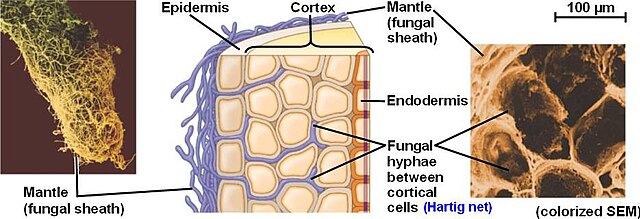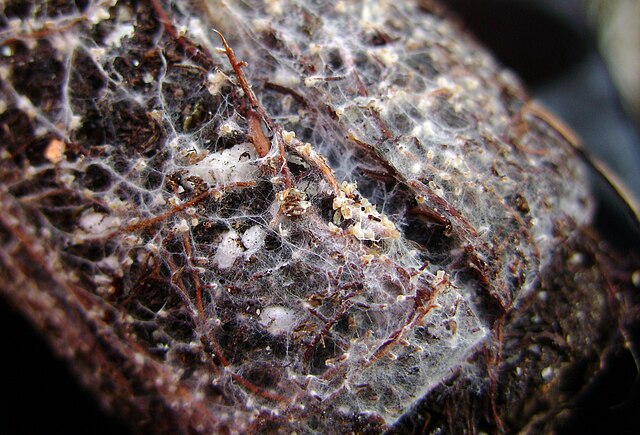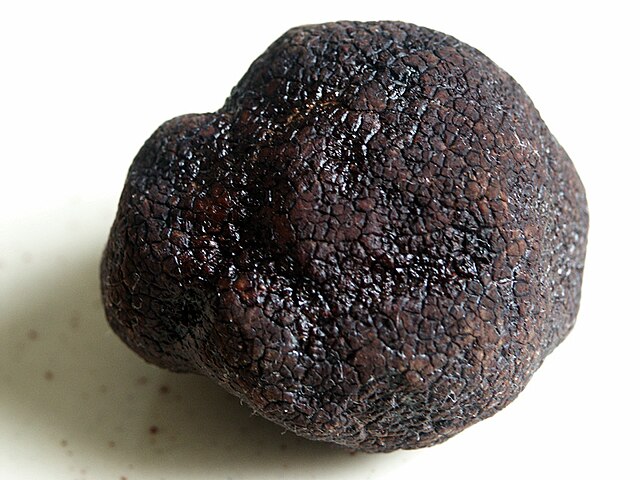An ectomycorrhiza is a form of symbiotic relationship that occurs between a fungal symbiont, or mycobiont, and the roots of various plant species. The mycobiont is often from the phyla Basidiomycota and Ascomycota, and more rarely from the Zygomycota. Ectomycorrhizas form on the roots of around 2% of plant species, usually woody plants, including species from the birch, dipterocarp, myrtle, beech, willow, pine and rose families. Research on ectomycorrhizas is increasingly important in areas such as ecosystem management and restoration, forestry and agriculture.
Ectomycorrhizal symbiosis, showing root tips with fungal mycelium from the genus Amanita
Basic morphology of a common ectomycorrhizal association
Extraradical mycelia (white) on the roots of Picea glauca (brown)
The hypogeous sporocarp of Tuber melanosporum, the black Périgord truffle
A mycorrhiza is a symbiotic association between a fungus and a plant. The term mycorrhiza refers to the role of the fungus in the plant's rhizosphere, its root system. Mycorrhizae play important roles in plant nutrition, soil biology, and soil chemistry.
Beech is ectomycorrhizal
Leccinum aurantiacum, an ectomycorrhizal fungus
Wheat has arbuscular mycorrhiza.
An ericoid mycorrhizal fungus isolated from Woollsia pungens








